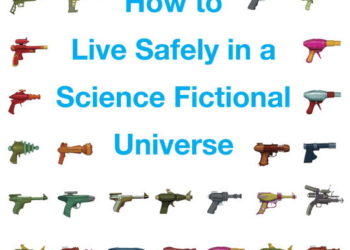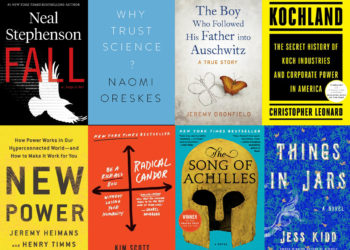Editor’s Note: Continuing an annual tradition, we take a moment to pause at year’s end to look back on the best books we encountered. As always, this is not a “best books of 2019″ list, but a list of the best books the Chefs read during 2019 — the books might be classics, a few years old, or brand new. This is one of the great things about books in all forms — they endure, invite visitation and revisitation, and beckon with ideas. Here’s Part 2 of our list, Part 1 can be found here.
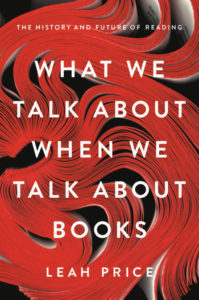 Jill O’Neill: There is a possibly apocryphal tale of a large, rare edition of a book from Kelmscott Press being used as a doorstop for years before some librarian or professor realized what the physical object was and saved it from further abuse. I was reminded of that as I read What We Talk About When We Talk About Books by Leah Price. Price is an academic, a book historian, as well as the founder and director of the Rutgers Institute for the Book. However, this particular title is intended for a mainstream audience, aiding readers to recognize cultural perceptions of appropriate uses for and handling of books. Our society so takes books for granted that we on one level no longer see the book as either a physical object or as a specific technology. Yes, recent developments have introduced an acceptance of reading books on our phones but, just as with the Kelmscott Press title used as a doorstop, other uses of a book emerge — the occasional act of looking up of something in a dictionary, the casual prop of a tilted table, etc. Price notes that the pervasiveness of affordable books, as well as more widespread literacy during the nineteenth and twentieth centuries, has caused a certain devaluing of the technology of the book in our culture. Reading a physical book is no longer necessarily a signal of virtuous behavior, an indication of our intent to better ourselves in the world. It’s just one of many technologies available for engaging with information. Our social needs and behaviors may shape the design of a technology but the reverse is also true. Technology shapes social norms, such as the acceptability of reading newspapers and books in a crowded subway car.
Jill O’Neill: There is a possibly apocryphal tale of a large, rare edition of a book from Kelmscott Press being used as a doorstop for years before some librarian or professor realized what the physical object was and saved it from further abuse. I was reminded of that as I read What We Talk About When We Talk About Books by Leah Price. Price is an academic, a book historian, as well as the founder and director of the Rutgers Institute for the Book. However, this particular title is intended for a mainstream audience, aiding readers to recognize cultural perceptions of appropriate uses for and handling of books. Our society so takes books for granted that we on one level no longer see the book as either a physical object or as a specific technology. Yes, recent developments have introduced an acceptance of reading books on our phones but, just as with the Kelmscott Press title used as a doorstop, other uses of a book emerge — the occasional act of looking up of something in a dictionary, the casual prop of a tilted table, etc. Price notes that the pervasiveness of affordable books, as well as more widespread literacy during the nineteenth and twentieth centuries, has caused a certain devaluing of the technology of the book in our culture. Reading a physical book is no longer necessarily a signal of virtuous behavior, an indication of our intent to better ourselves in the world. It’s just one of many technologies available for engaging with information. Our social needs and behaviors may shape the design of a technology but the reverse is also true. Technology shapes social norms, such as the acceptability of reading newspapers and books in a crowded subway car.
This book’s narrative (and even its layout) is designed to startle readers; initially, I thought one particular chapter’s layout was a misprint rather than a striking method of drawing attention to conventional and largely invisible approaches of navigating a book. (The book succeeds in that I was startled and forced to rethink my own reading behavior in absorbing a book on a topic with which I have some familiarity. Our perceptions of how books are supposed to work are deeply ingrained; I can’t think how the same point might have been successfully made in the Kindle edition.)
The book is a relatively quick read being less than 250 pages, but some of Price’s points will stick with you long after you’ve closed the cover.
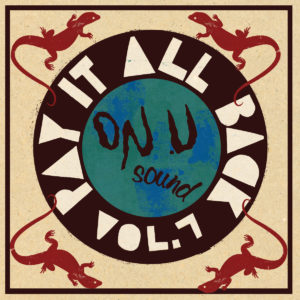 Rick Anderson: I rarely read books that are worth discussing in this annual post — what I spend most of my time reading are magazine articles, book review essays, and crime novels. However, because in my Other Life I’m a music critic, I do spend a lot of time listening to very interesting and exciting new music releases. So our editor suggested that maybe I could share my thoughts about a notable new album from this past year rather than the best book I’ve read.
Rick Anderson: I rarely read books that are worth discussing in this annual post — what I spend most of my time reading are magazine articles, book review essays, and crime novels. However, because in my Other Life I’m a music critic, I do spend a lot of time listening to very interesting and exciting new music releases. So our editor suggested that maybe I could share my thoughts about a notable new album from this past year rather than the best book I’ve read.
The most compelling album I encountered this year, among many, many other outstanding releases, is titled Pay It All Back Vol. 7, the latest in a longstanding compilation series from the On-U Sound label. I was introduced to On-U Sound back in 1989, when the music store where I worked had a copy of Pay It All Back Vol. 2 on the “Imports” rack. I gave it a spin, and my musical life hasn’t been the same since. That collection contained a dizzying array of sounds and styles, from radically deep roots reggae (Prince Far I’s “Water the Garden,” Bim Sherman’s “Run Them Away”) to techno settings of football chants (Barmy Army’s “Billy Bonds M.B.E.”), sampladelic electro-calypso (Forehead Bros.’ “Circular Motion”), and ethnographic dub (African Head Charge’s “Throw It Away”). I had never heard of any of these artists before, and I spent the next two decades seeking out everything I could find by all of them, as well as everything I could dig up from the On-U Sound catalog. The seventh volume in the series follows in what is now a longstanding tradition, presenting a wild mix of unreleased tracks, remixes, extracts from upcoming albums, and deep cuts from previous releases: some familiar names are back (African Head Charge, Mark Stewart, Little Axe) and some new ones are introduced (Los Gaiteros de San Jacinto, Higher Authorities, Denise Sherwood), but what remains the same is the thrilling stylistic variety — a variety that is grounded in groove, in bone-shaking bass, and in label head Adrian Sherwood’s wildly dubwise production style. And the booklet includes a comprehensive On-U Sound discography with extensive notes — a treasure trove of information in itself. For me, this was the most exciting release of 2019.
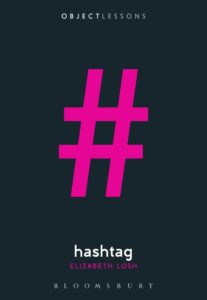 Karin Wulf: Hashtag, by Elizbaeth Losh.
Karin Wulf: Hashtag, by Elizbaeth Losh.
Here’s the context. Liz Losh is a colleague at William & Mary, and I have heard her speak about digital humanities, media technology, and feminism. I bought her new book simply to spend more time with her work; I didn’t by any stretch imagine that this would be the book I’d profile for our Thanksgiving reading roundup. In a year of incredible books, in which Tressie MacMillan Cottom’s Thick: and Other Essays provided such crystalline prose on dense and complex issues, when I read multiple histories I’ll be reading and citing for years, I chose to call your attention to Hashtag for what it tells us about the issues of race, gender, technology and communication — and the wrenching work of democracy in the era of big tech.
So, Elizabeth Losh’s Hashtag is the first in the Bloomsbury Object Lessons series I’ve read, but it won’t be the last. It is 4 ¾ x 6 ½ x ½ inches (or 12 x 16.5 x 1 cm). The paper cover is heavy, and back and front include folds for marking the page as the paper cover for a clothbound book would. The design is elegant, and makes the book easy to enjoy holding and reading, in fact reinforcing the connection of object in hand, thought in mind. It’s been a long time since I so enjoyed reading, and tagging, and marking a book this much. I remembered what it felt like to be an undergraduate, excited to read and to learn, and without the self-conscious selection and careful extraction of “what’s most important,” to let a book carry all the evidence of my enthusiasm.
The conceit of the series is that it is about “the hidden lives of everyday things.” But it is clearly much more than that. It is about ubiquitous things, some having deep historical roots (magnet) and others more shallow and recent (remote control). Their very ubiquity might suggest we don’t take time and care to reflect on their histories or significance. Thus, hashtags, which have a deeper history as a form of machine to machine communication, and continue to act as crucial metadata, have become a form of signifier, community builder, brand awareness, and more.
Another joy of Hashtag is being reminded what an important service really cracking literary analysis performs. Losh tells us that a key to hashtag use is “the principle of rhetorical mindfulness.” When the use of a hashtag about sports, politics, or fashion can seem casual or even superficial, Losh reminds us that this tag is acting in ways well beyond what its creator or user may have intended, both for good and for ill. It’s a time for attention to language and to the galvanizing force of rhetoric. This book, full of insight, wit, and pathos, is as important as anything I read this year.
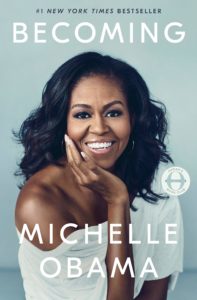 Charlie Rapple: I probably won’t be the only one to have read and loved Michelle Obama’s book, Becoming. She comes across as such a likeable character — sensible but fun, balanced, fair, and self aware. I found it full of guidance and inspiration, both in terms of the characteristics she conveys, and in terms of the insights it gives into Barack Obama. In a section on why she said “yes” to him running for president, she talks about why she believed he would be so good at it — and in doing so sets out a list of leadership qualities to aspire to: self-assurance, intellect, discipline, resilience, empathy — and being surrounded by “good, smart people”.
Charlie Rapple: I probably won’t be the only one to have read and loved Michelle Obama’s book, Becoming. She comes across as such a likeable character — sensible but fun, balanced, fair, and self aware. I found it full of guidance and inspiration, both in terms of the characteristics she conveys, and in terms of the insights it gives into Barack Obama. In a section on why she said “yes” to him running for president, she talks about why she believed he would be so good at it — and in doing so sets out a list of leadership qualities to aspire to: self-assurance, intellect, discipline, resilience, empathy — and being surrounded by “good, smart people”.
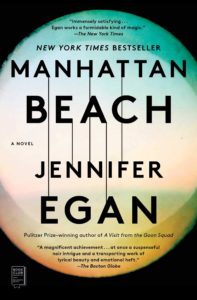 My fiction book of the year is Manhattan Beach: A Novel by Jennifer Egan. It’s got 1930s New York, the sea, gangsters, a woman excelling in a “man’s job” (navy diver), mystery, a twist, and all in the most beautiful prose, conveying a real love of and command of language (clouds “muffling a moon”, the sea “glassy and pure … as though it would chime if you tapped it with a spoon”, skyscraper windows like “gold flakes in the dusty sky”). It’s incredibly well researched — with fascinating detail about everything from underwater ship repairs to 1930s club music – and rich in evocative detail (domestic, architectural, landscapes, seascapes, skyscapes) and in the tiny observations that make a mood, a scene, a setting, a story.
My fiction book of the year is Manhattan Beach: A Novel by Jennifer Egan. It’s got 1930s New York, the sea, gangsters, a woman excelling in a “man’s job” (navy diver), mystery, a twist, and all in the most beautiful prose, conveying a real love of and command of language (clouds “muffling a moon”, the sea “glassy and pure … as though it would chime if you tapped it with a spoon”, skyscraper windows like “gold flakes in the dusty sky”). It’s incredibly well researched — with fascinating detail about everything from underwater ship repairs to 1930s club music – and rich in evocative detail (domestic, architectural, landscapes, seascapes, skyscapes) and in the tiny observations that make a mood, a scene, a setting, a story.
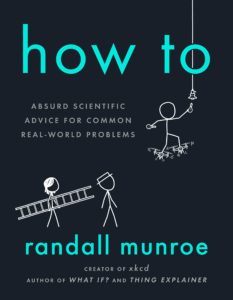 Todd Carpenter: This isn’t the first time I’ve recommended a book by Randall Munroe. I find him to be both insightful, hilarious, and exceptionally entertaining. In How To: Absurd Scientific Advice for Common Real-World Problems, Munroe turns his offbeat perspective and scientific approach to addressing the everyday problems we all face. For example, if you have a problem getting to a meeting on time, you could travel faster to get there more quickly (there’s a whole chapter on that approach), or you could just adjust time by getting the Secretary of Transportation to adjust your time zone. Alternatively, if you’re more ambitious, you could try just messing with the rotation of the earth to slow it down so you won’t be late. Munroe describes various ways in which one might go about this, along with several other unique strategies to avoid being late.
Todd Carpenter: This isn’t the first time I’ve recommended a book by Randall Munroe. I find him to be both insightful, hilarious, and exceptionally entertaining. In How To: Absurd Scientific Advice for Common Real-World Problems, Munroe turns his offbeat perspective and scientific approach to addressing the everyday problems we all face. For example, if you have a problem getting to a meeting on time, you could travel faster to get there more quickly (there’s a whole chapter on that approach), or you could just adjust time by getting the Secretary of Transportation to adjust your time zone. Alternatively, if you’re more ambitious, you could try just messing with the rotation of the earth to slow it down so you won’t be late. Munroe describes various ways in which one might go about this, along with several other unique strategies to avoid being late.
This particular chapter of the book reminded me of an actual scientific problem someone approached me with at a conference. Along these lines, it was one of the most curious conversations I’ve ever had about someone’s standards problems. It dealt with a real-life issue related to time and standards, involving a registry, exoplanets, the temporal variations between the sun and the earth, and Einstein’s theory of Special Relativity. Not everyone can have one of these mind-bending discussions with actual scientists. In some ways, Munroe’s book gives us a window into that sometimes strange world of science.
The book is full of other questions and potential solutions of the time-adjusting sort. What is the most efficient way to send a large file? (Try Butterflies.) How to predict the weather? How to jump higher? How can you make an emergency landing of various flying things at various locations? Or most importantly, how do you build a lava moat? The short vignettes give scientific approaches to addressing the problem, including scientific formulae or strategies for solving the particular problem in detail.
More importantly, this book adds to the popular literature, not so much as a vehicle to illuminate people on actual science, as much as to get people to understand the “how” or the “why” of science. By this I mean that there isn’t enough actual understanding of how one goes about undertaking science. Scholarly communication is, by its nature, quite technical. Since its inception as an exchange of letters among colleagues, there was a presumption about a level of expertise to understand the point of the article or letter. Unfortunately, even basic science has quickly gone well beyond the understanding of most of the population. Connecting what a scientist or engineer does to our day-to-day lives is critically important to overcome the growing bias against science that seems to be developing in our culture. Perhaps, if more people understood how researchers determine the things we collectively “know”, those people will be more willing to accept the proven results and there will be less room for the crazier forms of science denialism. In this regard, we need more authors like Munroe and more people who can translate the complex language of science into something anyone can understand.
However, there is something truly special about trying to explain complicated things in simple language.
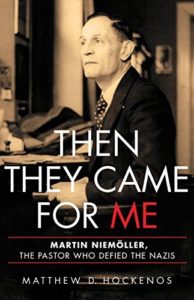 Judy Luther: Earlier this year a political protestor carried a sign with the reference “First they came for …” which sounded hauntingly familiar. A little searching revealed that it is a quotation on the wall of the U.S. Holocaust Memorial Museum that reads:
Judy Luther: Earlier this year a political protestor carried a sign with the reference “First they came for …” which sounded hauntingly familiar. A little searching revealed that it is a quotation on the wall of the U.S. Holocaust Memorial Museum that reads:
First they came for the Socialists, and I did not speak out –
Because I was not a Socialist.
Then they came for the trade unionists, and I did not speak out –
Because I was not a trade unionist
Then they came for the Jews, and I did not speak out –
Because I was not a Jew.
Then they came for me – and there was no one left to speak for me
The poem is by Martin Niemöller, who was a Lutheran minister and early Nazi supporter, an then later was imprisoned for opposing Hitler’s regime.
So, curiosity led me to the book Then They Came for Me: Martin Niemöller, The Pastor Who Defied the Nazis which was authored by Matthew Hockenos, a scholar of German Protestantism at Skidmore College. Published just last year, the book provides a well-researched and balanced view of a complex man who was prominent for speaking out against the Nazi regime yet controversial for his nationalistic sentiments.
Martin Niemöller grew up in a family with Prussian roots, committed to God and country. He served in the German Navy in World War I and then trained in the seminary following in his father’s footsteps and becoming a Lutheran minister. He married and his family grew to seven children. Struggling initially in post War Germany, Niemöller resented the Versailles Treaty which placed the blame on Germany for WWI. He shared the Nazi’s antisemitic views, except for those who had converted to Christianity, and believed the Nazis’ would support the nation’s Christian and moral renewal.
Niemöller’s subsequent opposition to the Nazi’s interference with the German Protestant churches led to his being interned in Sachsenhausen and Dachau concentration camps from 1938-1945. As a personal prisoner of Hitler, he fared better than most prisoners and was celebrated internationally for his fight for Christianity. After the war he came to believe that the Christians in Germany needed to assume responsibility for their lack of action. While touring in the U.S. he sought to provide relief for post-war Germans. The famous quotation is hard to document as it took different forms with different audiences. His subsequent pursuit of peace during the cold war continued to spark criticism as he spoke his conscience.
Hockenos acknowledges that Niemöller’s evolution was slow and incomplete, yet argues it is his imperfection as a human that makes him relevant today. Despite his own inherent prejudices, he worked diligently to make the world a better and more peaceful place. And his words continue to inspire us today.
Reading this biography was engaging on several levels. It’s a well written story of the evolution of a controversial figure; it depicts Germany before during and after the war; it describes the actions of protestant churches and their role in society; it offers lessons as history usually does.
This book appears all the more important in light of various news reports on polls conducted in the last year that reveal a surprising percent of millennials, sufficiently removed from WWII, know little or nothing of the holocaust.
 Angela Cochran: Looking back at the books I read this past year, an unintentional theme emerged. I spent the bulk of my time either reading about strong women or reading books about how to raise a strong girl. It’s been such a year of ups and downs.
Angela Cochran: Looking back at the books I read this past year, an unintentional theme emerged. I spent the bulk of my time either reading about strong women or reading books about how to raise a strong girl. It’s been such a year of ups and downs.
Women did some absolutely amazing things this year, and yet, in almost every instance, we were reminded of the bias that exists. Dr. Christine Blasey Ford, Ambassador Marie Yovanovich, Senator Elizabeth Warren, and on and on. Every incident small or large — from spacesuits that don’t fit women to a handsy presidential candidate — feels extremely familiar.
The first book I read this year was Becoming by Michele Obama. Her story is part biography and part what I had hoped Lean In by Sheryl Sandberg would be — practical advice about taking your place at the table. I found Lean In to be disappointing in its complete lack of acknowledgement that Sandberg was coming from a place of extreme privilege, despite the extreme name dropping along the way.
Obama is certainly not your typical business success story — though it could have been. She describes in her book the privilege of having a mother who advocated for her education as a child and the strong family values that she applied throughout her career. She worked at a children’s center while attending Princeton and was recruited after law school to a big firm where she mentored others and was in charge of diversity programs.
Obama’s story is really about an ambitious woman who constantly needs to recalibrate how she is going to use her talents and her education to make a difference when literally the rug keeps getting pulled out from under her — time off work to campaign, providing a childhood for her kids in difficult circumstances, becoming First Lady of the United States, you know, the normal stuff.
I found Obama’s story to be authentic and refreshing and relatable with practical advice even from her entirely unrelatable circumstances. The book also gives us a glimpse into the onslaught of hatred and vitriol that she faced as the first black FLOTUS. What we saw in the news was really just scratching the surface of what she faced.
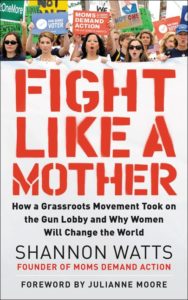 This year I grew interested in another remarkable woman. Shannon Watts is the founder of Moms Demand Action, a grassroots organization to promote gun sense laws. I don’t care to debate the state of gun sense laws (or lack thereof) in these paragraphs. I was drawn to Fight Like a Mother because her story is remarkable and unremarkable at the same time.
This year I grew interested in another remarkable woman. Shannon Watts is the founder of Moms Demand Action, a grassroots organization to promote gun sense laws. I don’t care to debate the state of gun sense laws (or lack thereof) in these paragraphs. I was drawn to Fight Like a Mother because her story is remarkable and unremarkable at the same time.
The day of the Sandy Hook shooting in Newtown, Conn., changed me forever as it did Watts. She was hundred of miles away in Colorado, a stay-at-home mom with a professional background in public relations. As she sat glued to the TV to learn about what had happened, she went to her computer and started a Facebook group. Thousands of fed up parents, mostly moms, horrified at what happened and scared to death that something so inconceivable could happen to their kids, found an outlet to express their anger.
Watts knew instantly that she had tapped into a powerful rage — pissed off moms. Watts took her Facebook group and with lots of help and advice along the way, she turned it into the largest grassroots movement to affect changes in gun laws.
Despite crushing losses of NRA-backed candidates in recent elections, the NRA still considers Watts and her army of volunteers a cute group of moms that bake cookies and have their kids make protest signs. What they have under-estimated is that these women will use every gift and talent they have to affect change. This is a profound lesson, particularly in times when many of us are so overwhelmed with the problems of the world and don’t know where to start. The book is chock-full of examples of everyday women that called her up or showed up at local chapter meetings and said, “I know how to do X. Would that be helpful?”
The most profound chapter for me was titled, “Losing Forward.” Watts describes the setbacks and mistakes they made as an organization, but talks about the importance of using those moments to build momentum to the next big step. We often hear that it is okay to fail as long as you learn something from it. She takes this a step further and gives examples of how to actively use that failure to secure the next win.
 She also has a chapter called “Channel Your Inner Badass.” For any woman who struggles with finding confidence in public speaking, taking on new roles, standing up to bullies, etc., Watts gives us a helpful dose of reality that makes you feel like Wonder Woman by the time you are done reading it.
She also has a chapter called “Channel Your Inner Badass.” For any woman who struggles with finding confidence in public speaking, taking on new roles, standing up to bullies, etc., Watts gives us a helpful dose of reality that makes you feel like Wonder Woman by the time you are done reading it.
I would consider both these books to be career training books wrapped in an engaging biography. I find myself thinking about the stories and advice from these pages as I contemplate strategies for the future.
I mentioned at the beginning that in between these two titles, I have been reading about the needs of girls. Folks, the news is not great. Our young women are having a tough time and we really need to figure out how best to support them. If you have a preteen, tween, or teen girl in your life, I highly recommend Under Pressure. It’s like a user manual in those head spinning moments.
Discussion
2 Thoughts on "Chefs’ Selections: The Best Books Read During 2019 Part 2"

